Punta Pitt
Our next day trip was a visit to Punta Pitt. Punta Pitt is actually on San Cristóbal island, and not on a different island – but it’s on the far tip of San Cristóbal, and you go by boat – taking around 2 hours – so it feels pretty much like visiting an uninhabited island!
All of the inhabited islands are set up in a similar way – there is a main town – which is on the coast, and then there is a road up to the ‘highlands’ area, where some farming and agriculture can take place (because the altitude stops it being hot and dry). Apart from the main towns, the highlands and a couple of other roads, the inhabited islands are pretty much empty – so even these islands have many spots that are only accessible by boat.
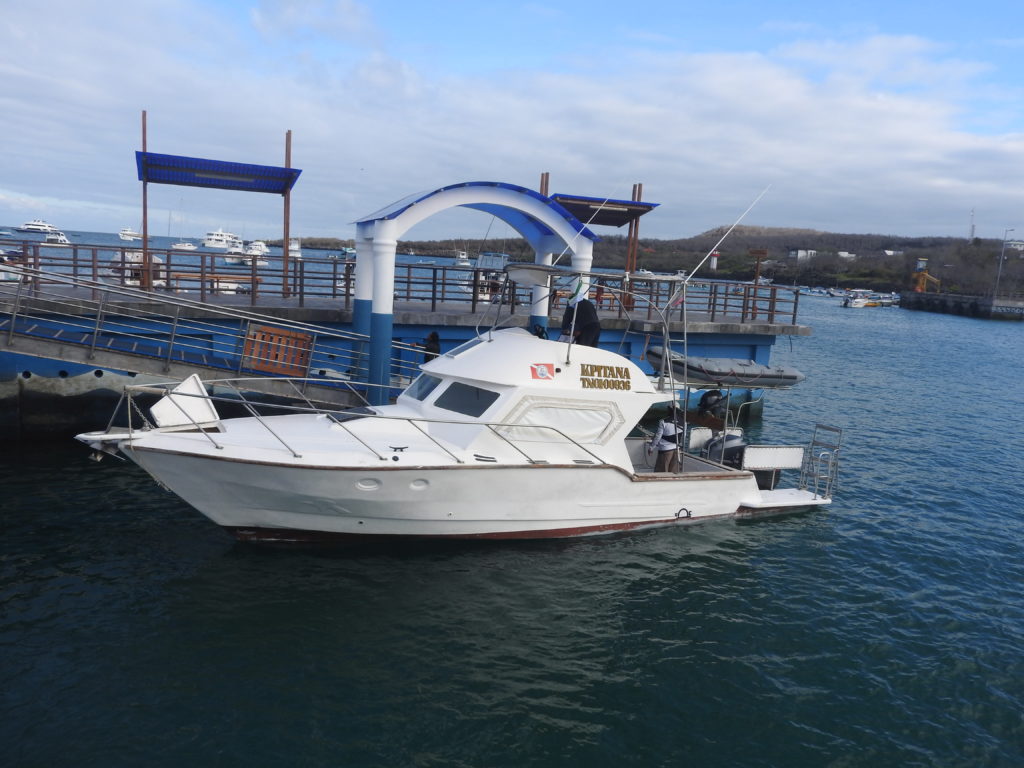
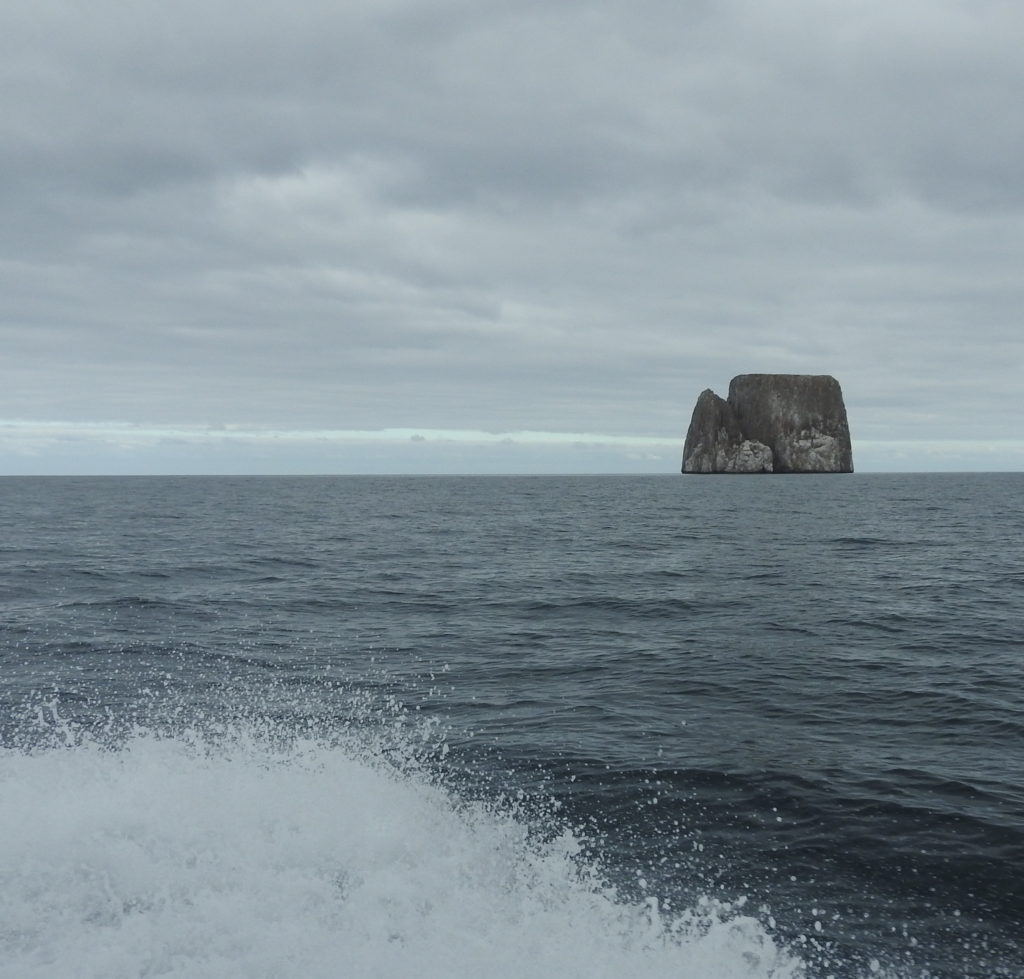

On this day trip, the snorkelling activity was first – and the boat parked out in the ocean about 100 metres from the shore. I’m not a very good swimmer, and so my snorkelling takes place while I am wearing a life jacket 🙂 In today’s case, I wasn’t the only one – as our tour companions were a family from Taiwan with two small children. It was quite pleasant to be such a small group – just the six of us, plus two divers who would be diving while we were snorkelling, and then joining us on the walk.
However, the guide didn’t seem to know that there would be children on board, and so had to hunt around for equipment the right size. Also, the two adults in the family didn’t ask for a life jacket until right at the last minute – when they saw me putting one on. The guide then asked them if they had snorkelled before, and if they could swim – and got a vague ‘sort-of’ reply to both questions. At this part he started looking alarmed and also weary!
Then one of the children started crying and refused to go in the water, and so they decided to leave that one behind on the boat. This time it was the captain of the boat who started looking alarmed! 🙂
In the areas of the Galapagos that require a guide to visit, the snorkelling must be done in a ‘guided’ manner – eg. the guide goes in front, and you all follow where they go. That way you don’t go anywhere you are not supposed to, they can take you to the good spots, and they can point out the sea creatures as they go along. So, off we went – guide in front towing a lifebuoy behind him with the child hanging off it, followed by the two adults carrying a go-pro camera on a HUGE two-metre long stick which they held in front of them filming the ocean floor as they went along!
We kept our distance at the back, so as not to be TOO disturbed by the waving around of the giant underwater selfie-stick. As we went along, suddenly we saw a turtle – REALLY CLOSE! 🙂 This snorkel was already way better than the slightly lame snorkel that we did on the Española day trip. We started to see lots of colourful fish, and also a big ray and a whitetip reef shark! I was pretty excited as I had never swum above a turtle, or been that close to a shark before! 🙂
Suddenly, there was a commotion at the front – the Taiwanese family were shouting. They wanted to go back to the boat. We were half-way through the snorkel, and the boat was about 100 metres away to the left. ‘We are too cold. We need to go back’, they said. The guide looked exasparated… ‘We are very skinny, we are not used to this cold water’, they continued.
To be fair – it was REALLY REALLY COLD. We had wetsuits on, but only short ones – and we were actually quite cold too. But maybe because we liked the fish more than them, or maybe because they ACTUALLY WERE skinnier than us 🙂 – we weren’t ready to call it day half-way through the snorkel. So, the guide told us to ‘wait here’ – in the middle of the ocean (YES, I was VERY glad of my life-jacket) (Of course CC is fine just floating there in the middle of the ocean – but she can swim properly…) and he took them back to the boat, before returning to us to continue the snorkel.
We really enjoyed the snorkel, despite the coldness of the ocean – and upon returning to the boat we were given a hot chocolate to stop our teeth chattering. Because there were divers on the tour, there were two snorkel activities – this allowed the divers time to do two dives. So while the divers were doing their second dive, we were deposited on the beach at Punta Pitt – where in theory we could go for a snorkel along the cliff edge. The Taiwanese family had had enough, and were just going to hang on the beach.
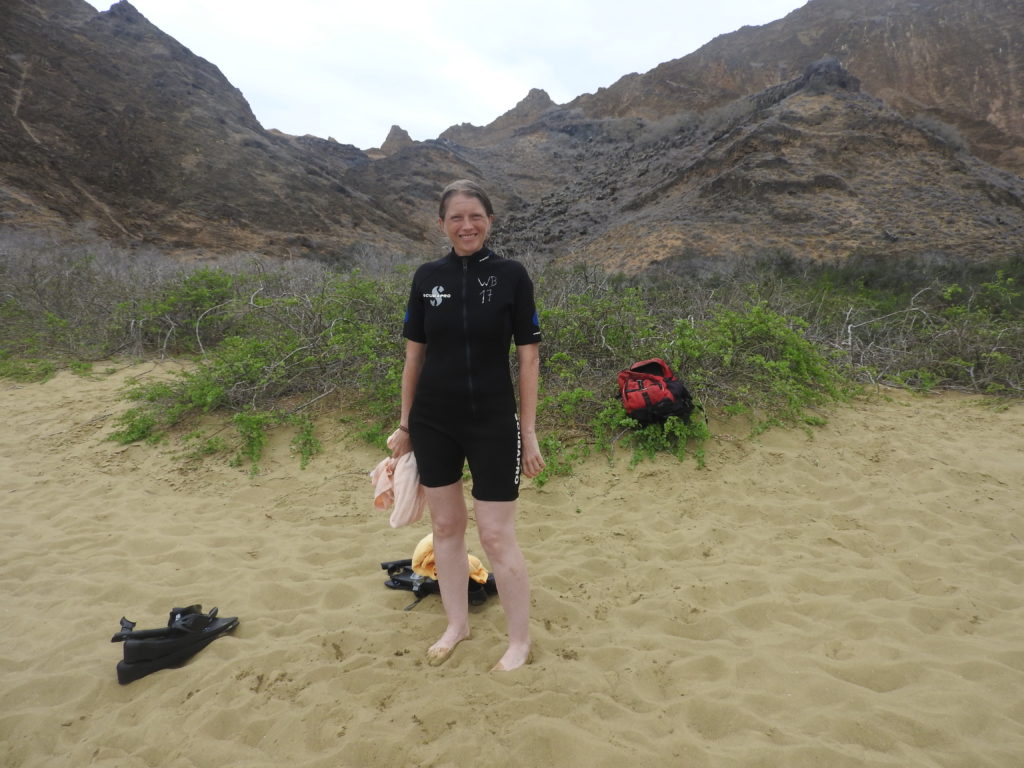
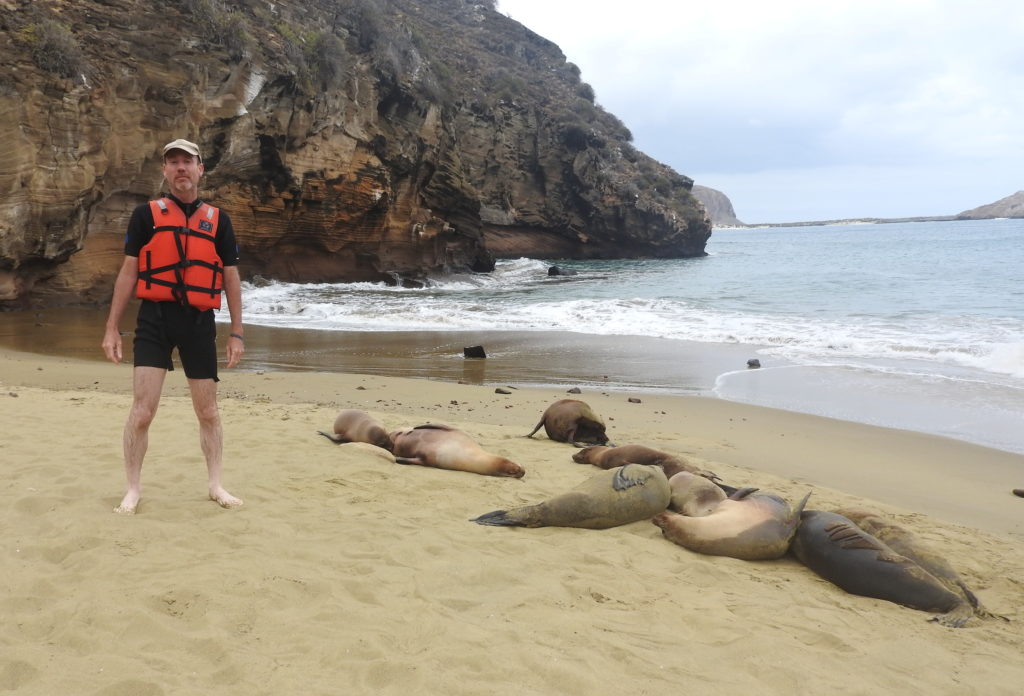
The second snorkel didn’t turn out too well…. first of all the guide lost one of the pins from his fancy fin… and then – because the water was so rough – I dropped one of my flippers while trying to put it on in the water. It washed away, never to be found again – despite 25 minutes of searching for it by the guide. I felt a bit sorry for the guide – clearly today would count as a ‘bad day at work’!
So, the second snorkel didn’t happen – but it was really rough, and visibility was pretty bad – so we weren’t too bothered, and we just hung out on the beach until lunchtime.
Lunch on the boat was pretty good, and after lunch it was back to Punta Pitt to start the walk. The main attraction of Punta Pitt is the boobies – it is the only Galapagos location that has breeding red-footed boobies that you can reach on a day trip. It is also home to the other two kinds of boobies that are found breeding in Galapagos – the blue-footed booby, and the nasca booby.


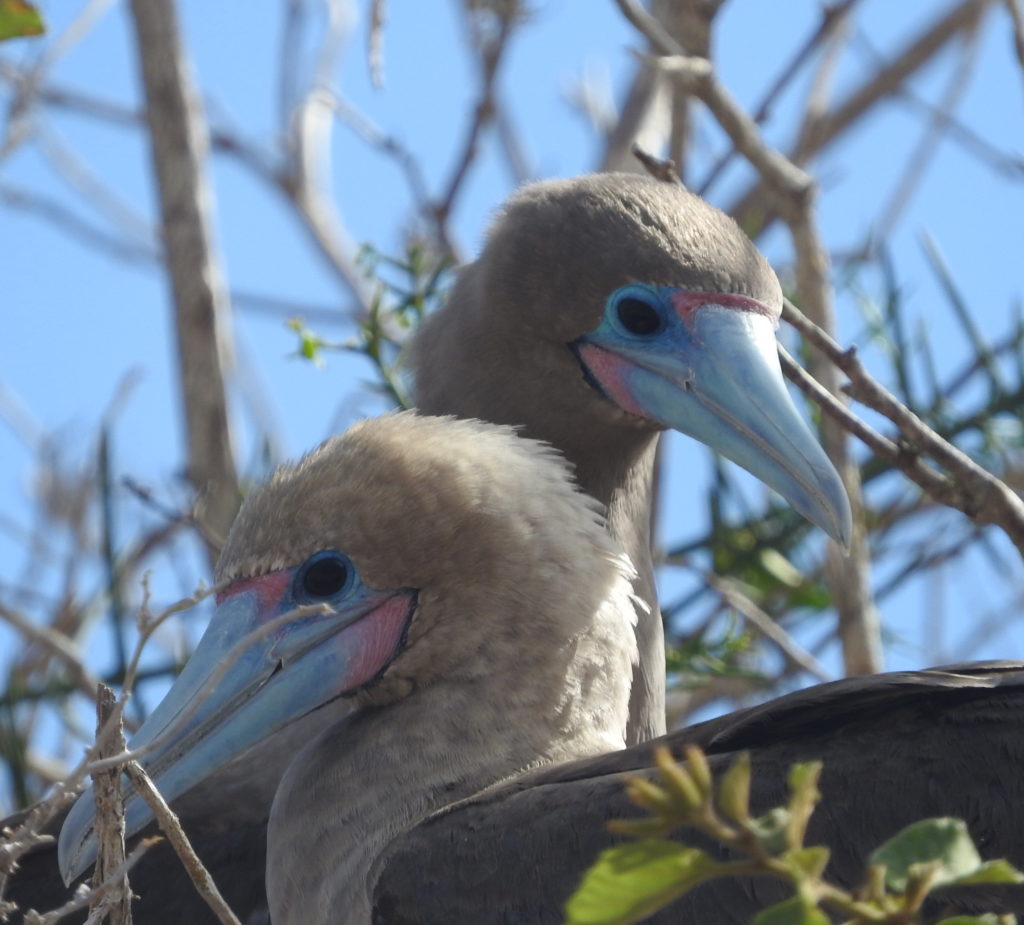


Moving past the red-footed boobies, we headed for the blue-footed booby breeding area. Blue-footed boobies are famous because they have blue feet – but more than this – they use their blue feet in a courtship dance. The bluer the feet, the better a romantic prospect the booby is.
Because of this, the male does a special dance for the female. The dance starts by him showing off how lovely and blue his feet are. Then he dances around a bit, waving his blue feet around as much as possible, and if the female is interested she will join in. He then shows her some nest material, to prove how great he would be at making a nest, and shows off his blue feet a bit more. Part of the dance is called ‘sky pointing’, where he throws his head skyward and shakes his wings making a funny noise.
The goal today was to find some boobies who were dancing – and WE DID! 🙂 It was pretty amazing watching them – we found one couple doing a dance – they were quite far away so it was diffcult to capture photos, and we found another one doing some excellent ‘sky-pointing’. We also learnt that boobies lay more than one egg at once, and the first chick to hatch ends up slightly bigger. If there is a food shortage then the older chick gets fed first, and it will even kick the younger one out of the nest and leave it to starve… while the parents look on… it’s tough in the booby world…

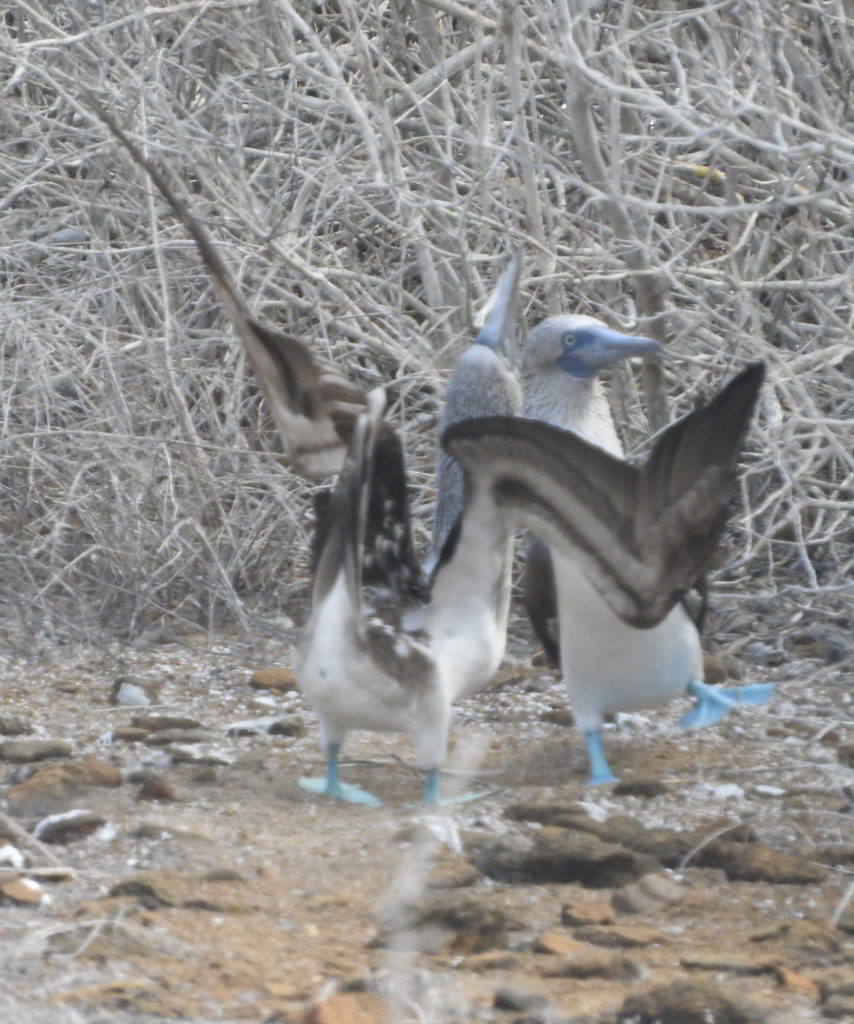
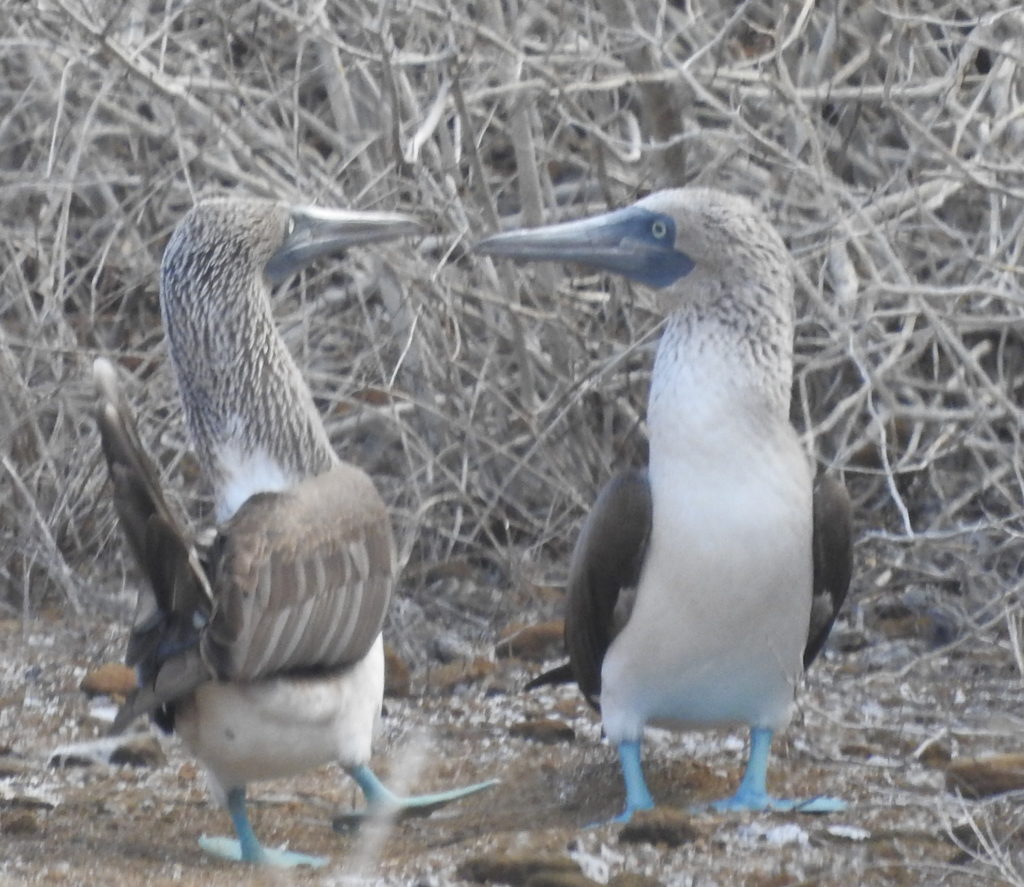
Here is a video of a booby doing some awesome ‘skypointing’! 🙂
After all the dancing excitement, we continued the walk – and came across a red-footed booby and a blue-footed booby hanging out together – which is pretty uncommon apparently.

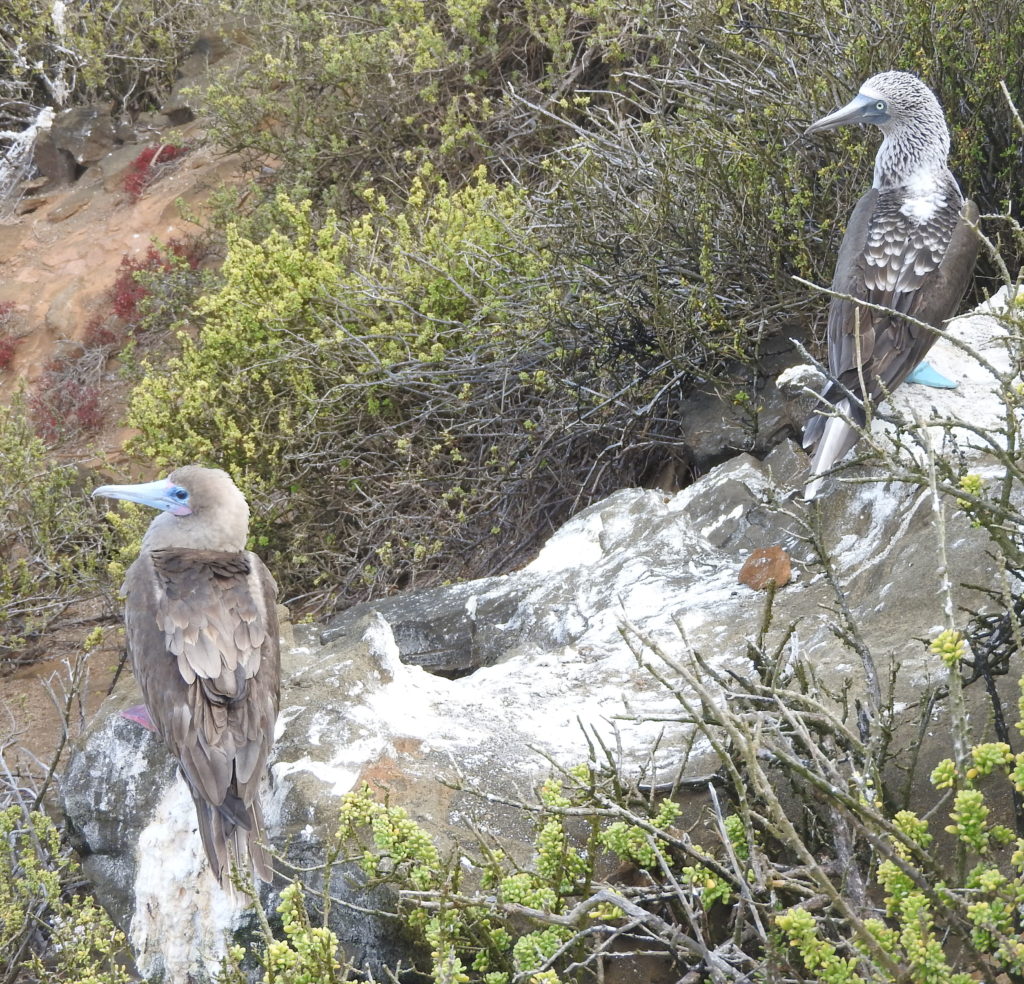
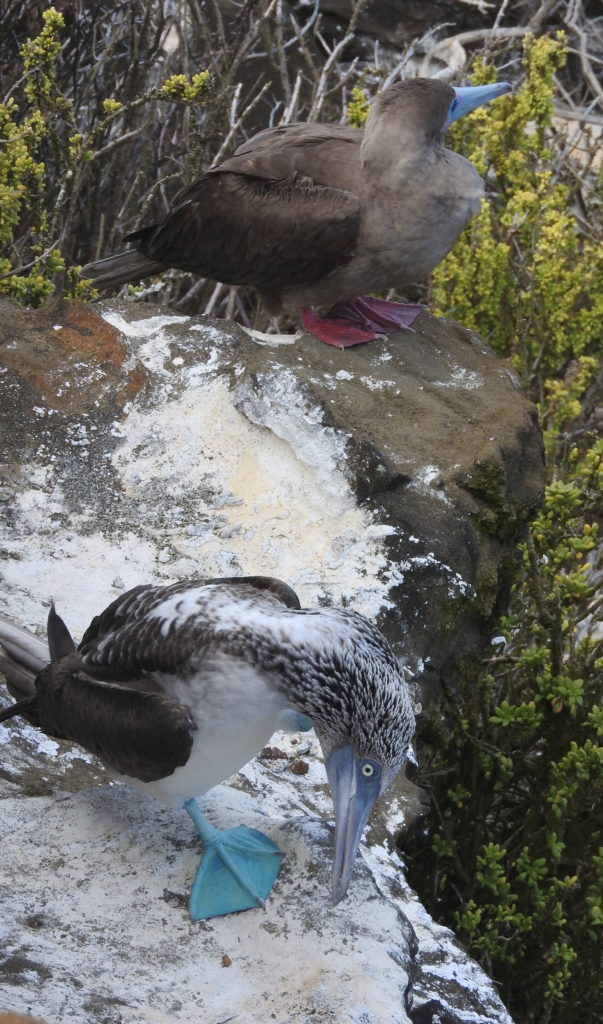
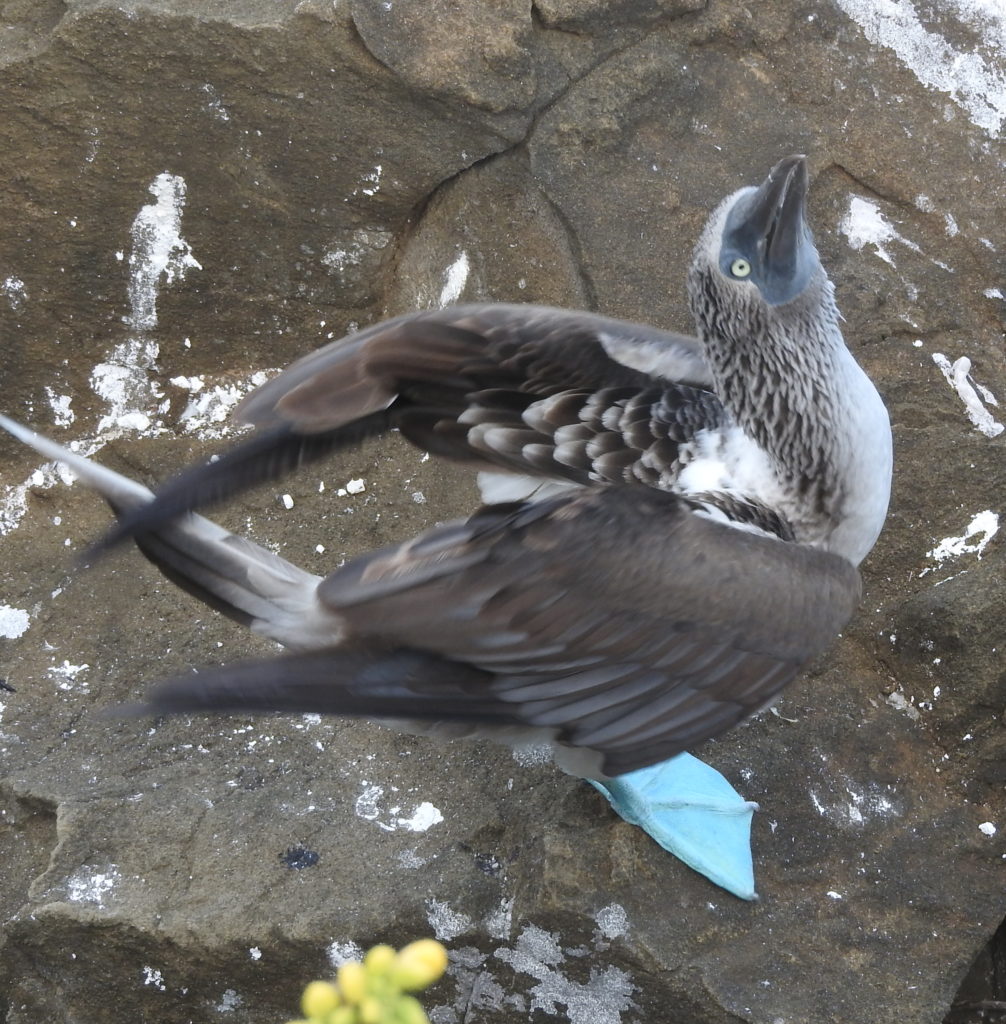
Boobies were the highlight of Punta Pitt – but the scenery was pretty nice too.
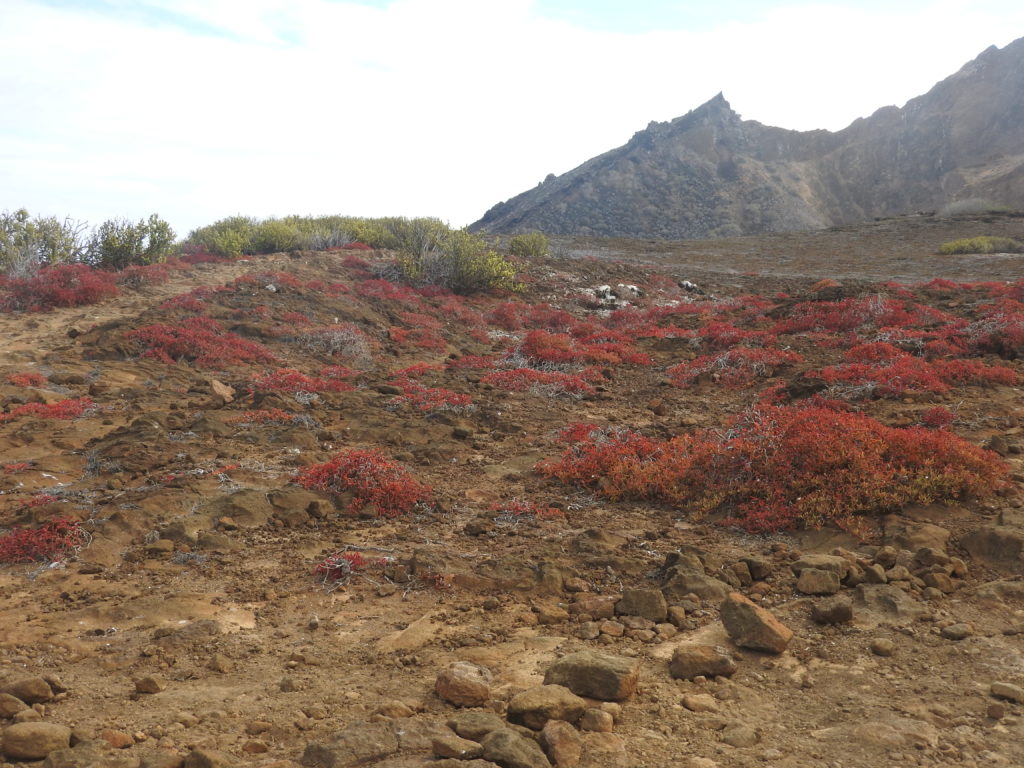
Just before we returned to the boat for the trip back – we found a couple more dancing boobies 🙂
A nice end to an excellent day out!

